In 2017, Lex du Pont donated a one-of-a-kind Indian motorcycle owned by his father E. Paul du Pont. E. Paul had organized a merger between DuPont Motors and Indian Motorcycle (originally founded in 1902) in 1930. After the merger, E. Paul served as president of Indian until 1950. Under his leadership, the company produced marine motors, aircraft engines, and air conditioners. E. Paul is credited with saving Indian from financial ruin during the Great Depression.
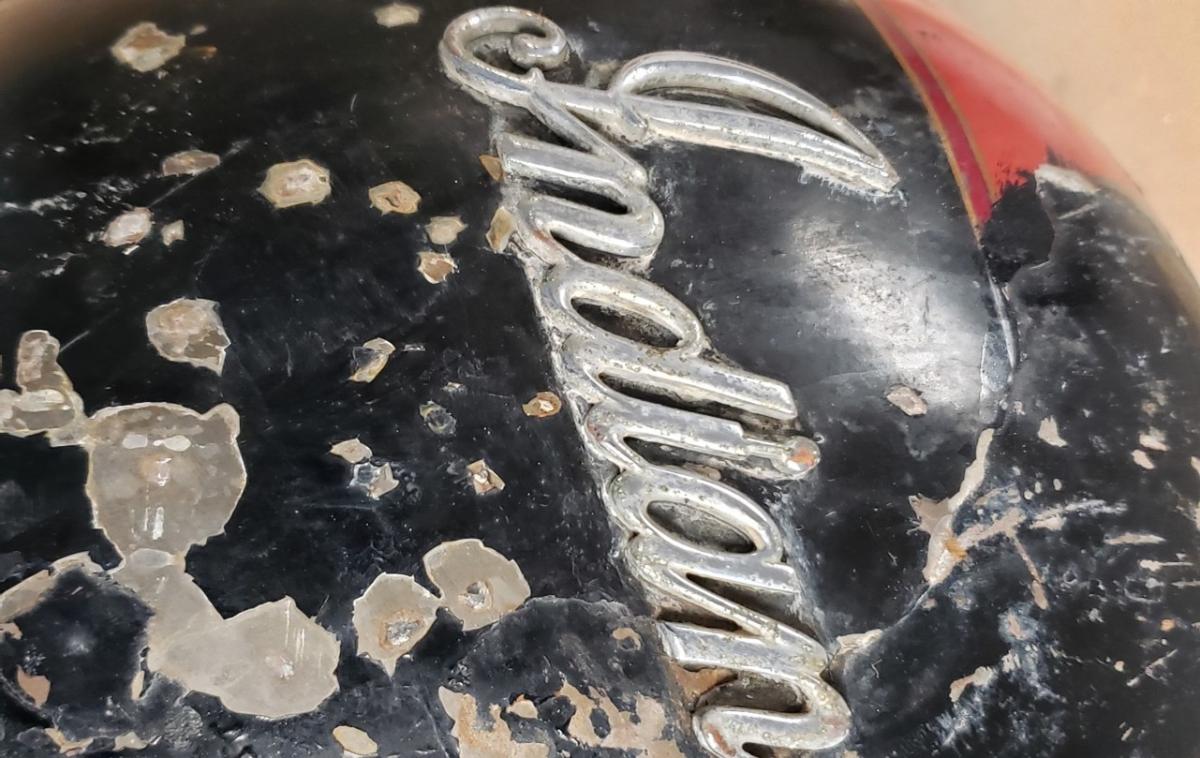
When the United States Department of Defense commissioned the Indian Motorcycle Company to build the Indian 841s, they were looking for a vehicle to counter the tough and reliable military BMW R71 motorcycles used by the Germans in World War II; these motorcycles formed the backbone of the German rifle regiments. Unfortunately, the Indian 841 did not see battle because the United States Department of Defense opted for the Jeep instead of the 841. However, the Indian 841 was one of the most advanced and unique bikes built for its technology, reliability, durability, and beauty.
The engine design features the longitudinally mounted air-cooled 90-degree crankshaft V-twin with the ground-breaking shaft drive to replace the chain and sprocket. The exposed cylinders are protected by crash bars. It has a tubular frame and plunger rear suspension. The shifters are foot-operated, but the clutch is hand-operated. Instead of the spring fork and rubber fork boots, this cycle has a girder fork; this pair of uprights is attached to the triple clamp by linkages with two heavy springs between the top and bottom triple clamps, so the springs are seated on top of the front fender.
In August 1941, G. W. Weaver (on behalf of Indian Motorcycle), filed a patent—application number 2,316,477—with the patent office that “makes possible a much more extensive use of the shaft drive in motorcycle construction and without sacrifice of stability or the use of excessively long wheelbases. Also, it permits a more efficient use of V-type motors…”
The major benefits of shaft drive are lower maintenance, lower running costs, and cleanliness. The disadvantages of chain drive bikes are that they need their chains adjusted regularly and can be expensive to replace when worn out. They also need lubricating often, especially in bad weather, which can be messy and inconvenient. Shaft drives in motorcycles have been criticized as heavier than chain drives and absorbing more of the engine’s power before reaching the rear wheel. For the rugged battlefield in Germany, shaft-drive systems are fully enclosed and unaffected by the weather and only need periodic oil changes. Shafts are smoother (no chain slap), and though they use more power between the engine and the ground, they do not drag bikes, at least not on monster-size bikes like the 841. It is a shame this bike was not used in the Second World War.
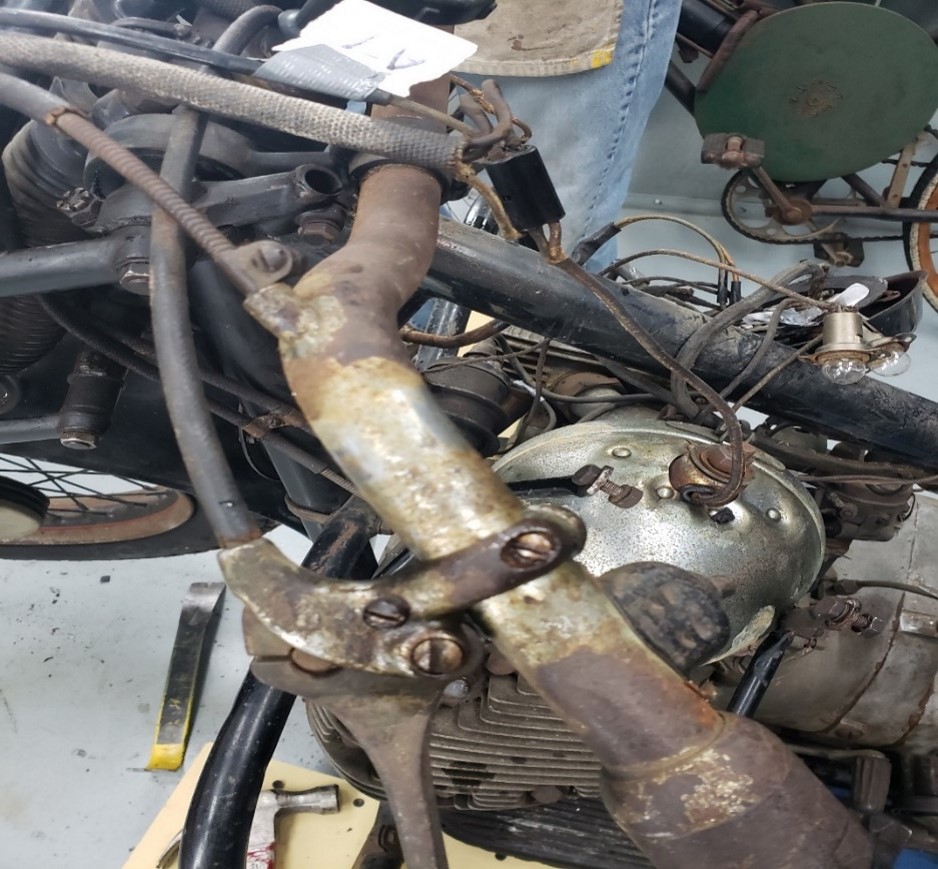 Hagley’s 841 had been adapted for civilian use. A double seat replaced the single seat. The military green paint was replaced with black paint on the fenders and body. The gas tanks were painted black and bright orange with beautiful trimmings. The handles, gears, shifters, exhaust, and muffler system were all chromed. The original military vehicle had an all-dark-green paint without the shiny chrome that would provide perfect camouflage in the war-front.
Hagley’s 841 had been adapted for civilian use. A double seat replaced the single seat. The military green paint was replaced with black paint on the fenders and body. The gas tanks were painted black and bright orange with beautiful trimmings. The handles, gears, shifters, exhaust, and muffler system were all chromed. The original military vehicle had an all-dark-green paint without the shiny chrome that would provide perfect camouflage in the war-front.
When this bike came to Hagley, it was in a poor state of preservation; massive corrosion had threatened its existence. The two gasoline tanks had rust on the inside and all over the exterior, undermining the paint on the surface.
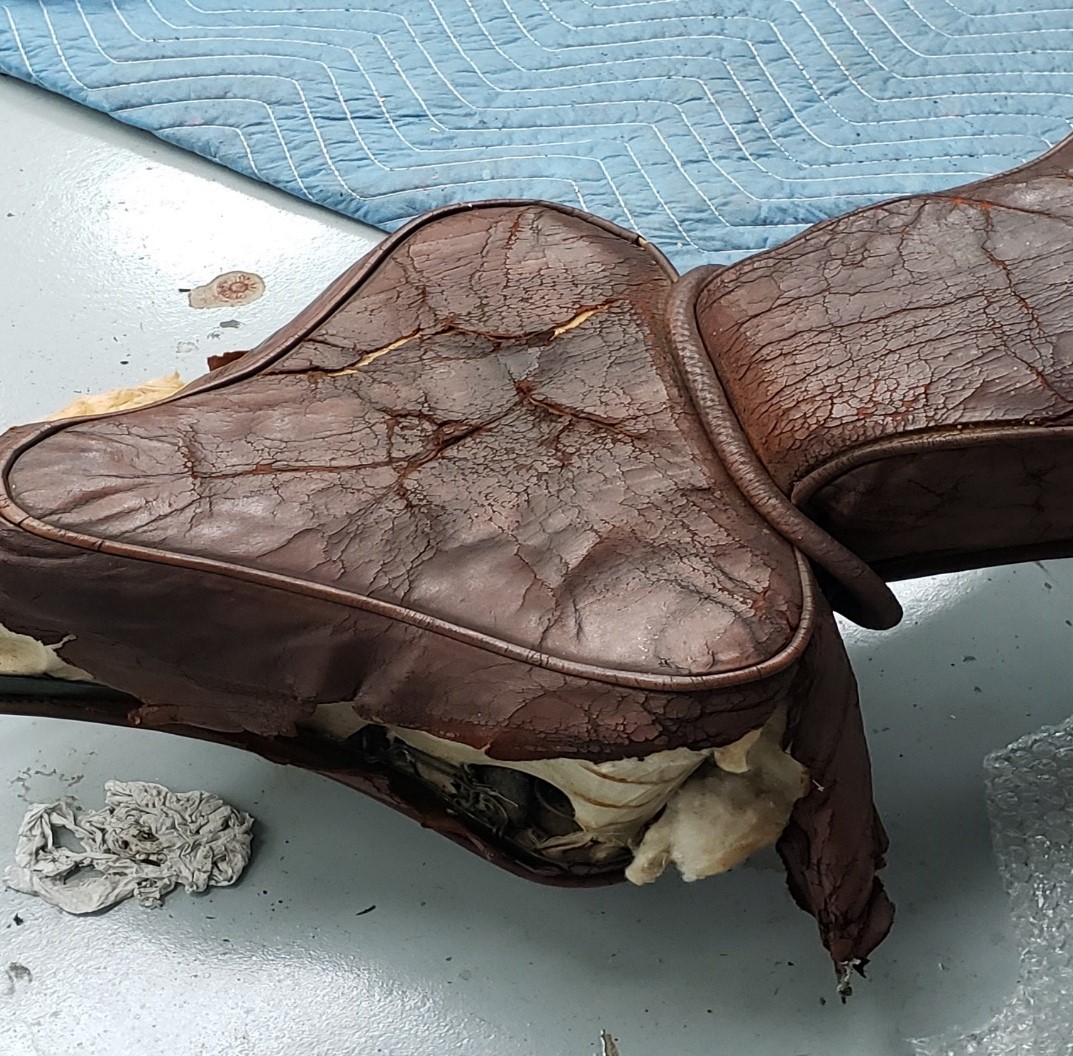 The bike looked dirty, grimy, and needed some TLC. There was greasy dirt all over. Beneath the cover of dust, the black paint was in fairly good condition. The paint was best preserved on the fenders, but the paint on the rest of the bike was replaced by rust. Among the issues discovered were that
The bike looked dirty, grimy, and needed some TLC. There was greasy dirt all over. Beneath the cover of dust, the black paint was in fairly good condition. The paint was best preserved on the fenders, but the paint on the rest of the bike was replaced by rust. Among the issues discovered were that
- The exhaust systems, handles, drives, and transmission systems were severely corroded.
- The surface chrome was replaced by reddish-brown rust.
- The oil tank leaked.
- The electrical wires were cracked, torn, mangled, misconfigured, or missing.
- The leather on the seat was cracked and torn, with foam and cotton stuffings protruding and falling out of the seat.
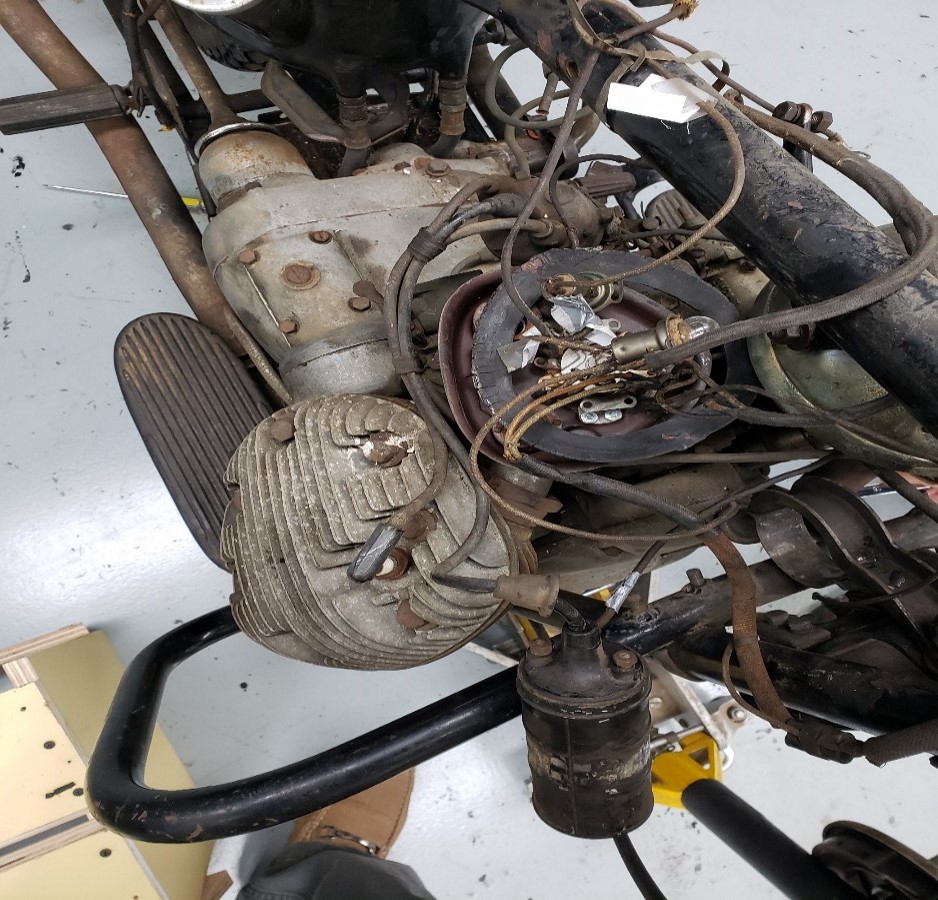
The Objects Conservation Laboratory at Hagley spent over five hundred and fifty hours cleaning and preparing the bike for exhibition.
Conservator Ebenezer Kotei worked with volunteer Bob Woodman to dismantle the bike completely to remove rust and greasy dirt properly, and to apply protective paint for its preservation. The paint used is acrylic urethane (Ford Motor Company) purchased from PPG in Newark, Delaware. Chroming service was provided by Frankford Plating in Philadelphia. The restored motorcycle can be viewed in the images below.
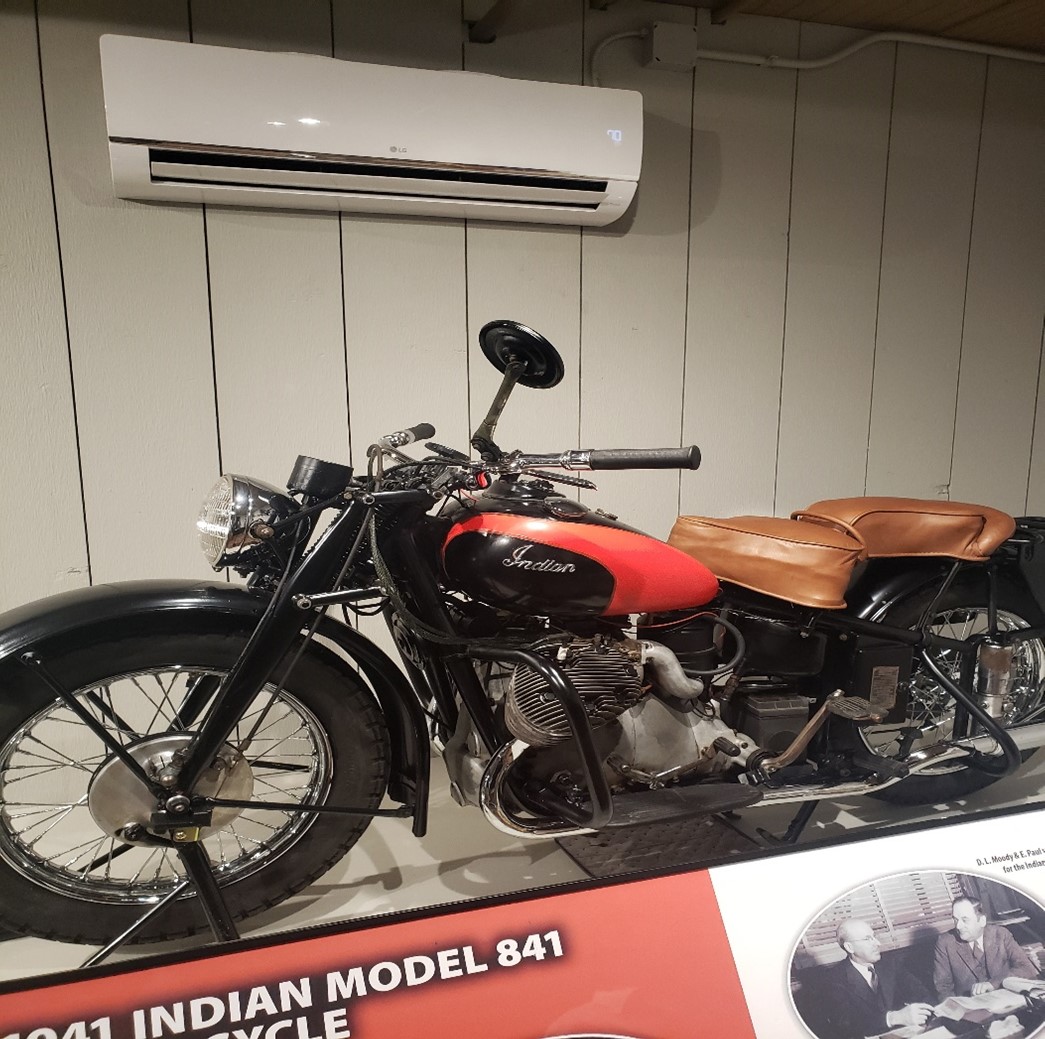
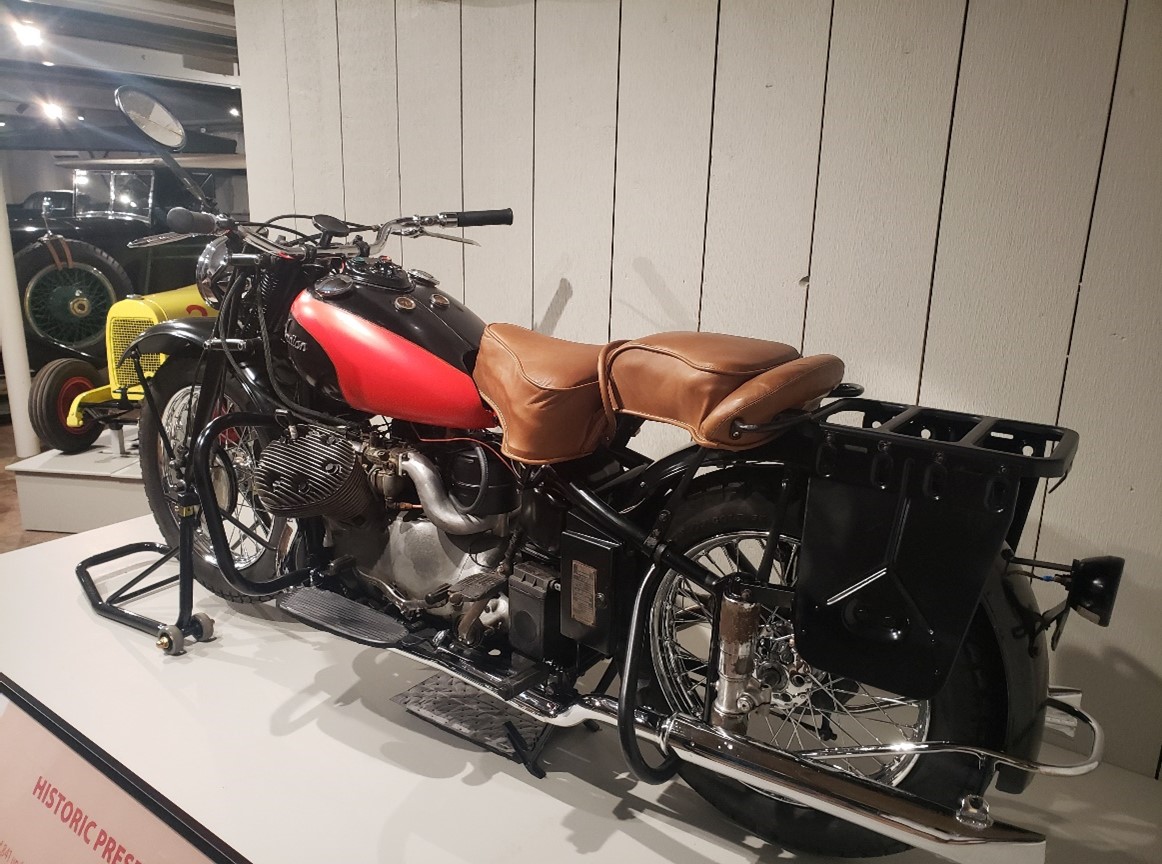
While the bike was not restored to running condition, it could be made to run with a few adjustments. The rust was completely removed from inside the tanks, and the interior was conditioned to take gasoline again. We re-wired the bike using the 841 schematics, but the ignition key did not come with the bike. The present tires are cracked, so they cannot be ridden.
It is a beautiful motorcycle. Be sure to check it out in Hagley’s newest exhibition, Du Ponts Down the Road, which showcases six vehicles all owned and driven by members of the du Pont family.
Ebenezer Kotei is the Objects Conservator at Hagley Museum and Library
